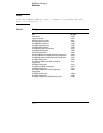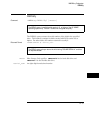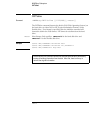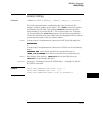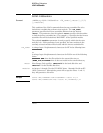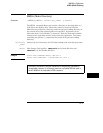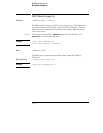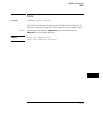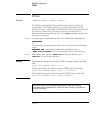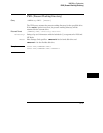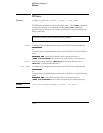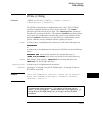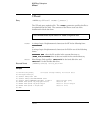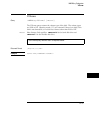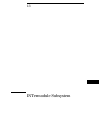
PURGe
Command :MMEMory:PURGe <name>[,<msus>]
The PURGe command deletes files and directories from the disk in the
specified drive. The PURge command only purges directories when the
directory is empty. If the PURge command is sent with a directory name and
the directory contains files, the message "Directory contains files" is
displayed and the command is ignored. The <name> parameter specifies the
file name to be deleted.
<name> A string of up to 10 alphanumeric characters for LIF in the following form:
NNNNNNNNNN
or
A string of up to 64 alphanumeric characters for DOS in one of the following
forms:
NNNNNNNN.NNN when the file resides in the current directory or
\NAME_DIR\FILENAME when it does not reside in the current directory
<msus> Mass Storage Unit specifier. INTernal0 for the hard disk drive and
INTernal1 for the flexible disk drive.
Example This instruction purges the file named "FILE1" from the currently specified
drive:
OUTPUT XXX;":MMEMORY:PURGE ’FILE1’"
This purges all files in the directory named "TEMP" from the hard drive:
OUTPUT XXX;":MMEMORY:PURGE ’\TEMP\*.*’,INTERNAL0"
This instruction purges the directory named "TEMP" from the hard drive:
OUTPUT XXX;":MMEMORY:PURGE ’\TEMP’,INTERNAL0"
Once executed, the purge command permanently erases all the existing
information about the specified file. After that, there is no way to retrieve the
original information.
MMEMory Subsystem
PURGe
12–20



